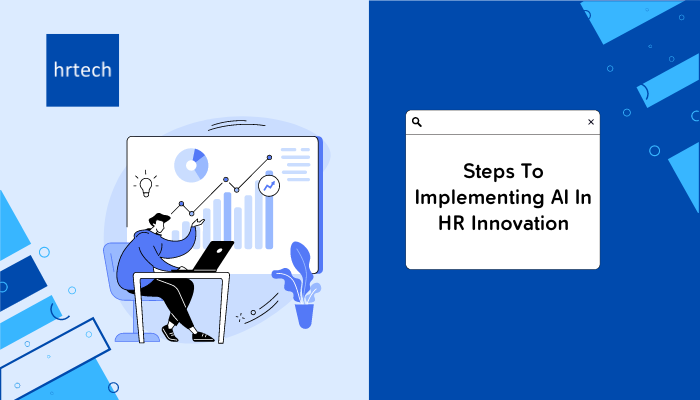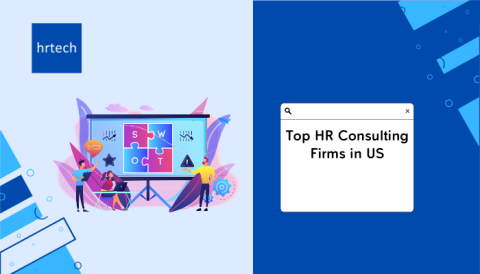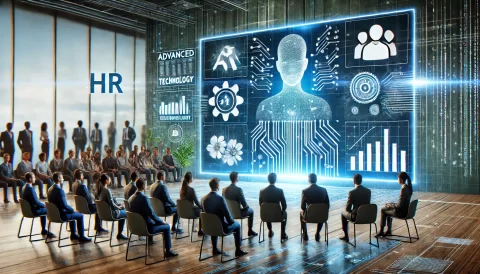Artificial intelligence (AI) is transforming businesses across every industry and function – and human resources is no exception. As companies increasingly realize the power of AI and automation to eliminate repetitive tasks, HR leaders have a prime opportunity to harness intelligent technologies to provide better employee experiences and data-driven workforce insights.
Implementing AI In HR Processes
The application of artificial intelligence (AI) in human resources (HR) is transforming how companies attract, develop, and retain talent. As per the “AI in HR Innovation” report by McKinsey, over 50% of organizations have implemented or are planning to implement AI solutions for HR processes by 2024.
AI and automation present immense potential to free up HR teams from repetitive administrative tasks and instead focus on strategic priorities. However, simply purchasing an AI software tool does not guarantee success. Thoughtful planning and change management are crucial.
Here are the 5 key steps organizations should follow to successfully implement AI in HR:

1. Identify HR Pain Points Amendable using AI:
The first step is to analyze existing HR workflows and identify pain points that can be potentially alleviated via AI. For instance, typical recruiting processes have many manual steps of sourcing, screening, interview scheduling/coordination which can greatly benefit from “AI-driven Recruitment” solutions.
As per data from Ideal, over 75% of talent acquisition leaders state that AI-powered tools have reduced their workload allowing them to focus on building relationships and branding.
Likewise, analyzing employee lifecycle data using “Predictive Analytics in HR” can generate insights to improve retention rates. The key is to prioritize 1-2 core HR priorities where AI can drive maximum business impact.
2. Evaluate AI Software Solutions:
Once target HR processes are identified, the next step is evaluating different AI software solutions in the market. When comparing vendors, key aspects to analyze are:
Core AI capabilities: What ML/NLP techniques are used? How accurate are predictions?
- Data security and ethics
- Ease of integration with existing HRIS systems
- Customizability to unique business needs
It is also crucial to validate software capabilities via demos and trials before purchase decisions. As per Gartner’s projections, by 2025 over 80% of AI implementations will remain alchemy, failing to go beyond the pilot stage due to lack of skill, data and vision.
3. Prepare and Clean Data
The success of any AI application relies heavily on data quality and availability. HR teams should invest time “cleansing” existing people data in HRIS systems – filling gaps, removing duplicates etc.
Data collection processes also need enhancement. For instance, adding interview feedback surveys, or badging mechanisms for skills/achievements generates richer employee lifecycle data for “Data-driven HR Decision Making”.
As per Harvard Business Review, lack of quality training data is the top barrier faced by over 50% of organizations in harnessing value from AI. Data readiness is thus key.
4. Train HR Staff and Set Expectations:
For smooth adoption of new technology, proper change management and capability building across HR teams is vital. HR professionals should be trained on capabilities of AI systems through workshops. Also setting transparency and ethics related guidelines early on increases staff acceptance.
There also needs to be clear communication that AI aims to enhance not replace HR roles. As per SAP research, almost 80% of respondents were apprehensive about AI leading to loss of jobs in HR. Highlighting the increased strategic contribution by HR professionals post AI implementation helps secure buy-in.
5. Continuously Improve AI Models:
Unlike traditional software, AI systems need constant feedback to improve predictions. So the last step is monitoring system performance and re-training algorithms.
Areas to track include – recruitment prediction accuracy, user satisfaction scores, quality of automated interview summaries etc. Any gaps identified are plugged via tweaks in the “Machine Learning” models underlying the AI tools.
For example, UiPath in their 2021 Global RPA survey found that over 80% of organizations have dedicated staffing for continuous improvement of automation scripts which help improve ROI over time.
Transforming HR through Agile Workforce Solutions.
We enable your success by identifying the right fit strategies, systems, processes, and technologies that facilitate workplace and workforce transformation.
The Road Ahead:
As more companies move towards digital HR transformation, AI and ML will increasingly become ubiquitous. Per MarketsandMarkets data, Global HCM technology spend is estimated to reach $30 billion by 2025, with AI and ML as key drivers.
While integrating “Transformative AI Applications in HR” involves upfront effort, the long term productivity and performance gains are well worth it. From radically enhancing recruitment to providing deeply personalized & proactive support, AI promises to fundamentally redefine HR. The five steps outlined above serve as a practical guide towards starting your organization’s AI-powered HR journey.
So are you ready to leverage “Cutting-edge HR Technology” to empower both employees and business growth? Reach out to HRTech learn more about how our integrated HR solutions powered by latest advancements in AI can benefit your organization!





